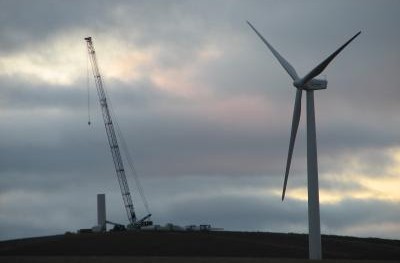
By Eugenia Tchaiko
The city of Melbourne, located in the state of Victoria, Australia, has expressed concerns about its energy use. Melbourne—and the country as a whole—relies on fossil fuels for power, primarily black and brown coal. Renewable energy use has been on the rise in recent years, accounting for 33.3% in 2009 -10 (increase of 40% from 2005 – 06) ( Energy use by source, 2011). The City of Melbourne is planning to reduce coal use and increase gas-fired generation by 2030 (Melbourne, 2009, p. 28).
Electricity is the most energy-intensive sector in Melbourne; local government is expecting an increased demand ( Energy use by source, 2011). CityPower, responsible for maintenance and efficiency of distribution, works in accordance with the Australian Energy Regulator (AER) to deliver the necessary power to business and homes in Melbourne and its suburbs. Ownership is divided into 51% by two Chinese corporations, with a listing on the Hong Kong Stock Exchange. The remaining 49%, owned by Spark Infrastructure, is listed on the Australian Stock Exchange (CityPower, 2011).
A climate risk assessment (Mehrotra et al., 2009) of the energy sector in Melbourne shows reason for concern, as increasing temperatures and a growth in energy demand from within the city will combine exacerbate existing concerns about the capacity of the electrical grid to meet the city’s needs. Several areas of the city, including Central Business District and the Docklands, are in active development. There is a significant growth in green house gas emissions as a result of the thriving commercial sector and housing market in Melbourne. Emissions grew by 54% between 2001-02 and 2005-06 (Melbourne, 2009, p. 28). As the number of housing and commercial units increases, the number of air conditioner units installed is expected to rise to 70% in the state of Victoria by 2018 (Melbourne, 2009, p. 37). This would put significant stress on the already struggling electrical grid. Power outages during heat waves are–and will continue to be–a concern for the City of Melbourne as the population ages.
When Melbourne saw an increase in greenhouse gas emissions the government implemented programs to work towards their reduction. The 1200 Buildings Program urges building owners to design efficient buildings as well as reduce energy consumption and water use ( Amendment C187, , n.p.). Furthermore, the Melbourne Planning Scheme Amendment C187, proposed to the Future Melbourne Committee in 2011, aims to correct standards of building. Proposed changes strive to reduce water consumption and increase the energy efficiency of the city.
Australia has been dedicated to improving energy consumption throughout the country by increasing renewable energy sources and reducing demand on fossil fuels. To reduce demand on non-renewable resources, Australia is planning to build several large-scale wind power projects. Waubra Wind Farm, the largest in the southern hemisphere, is actively providing power to the state of Victoria (Australian Bureau of Statistics, 2010).
A recommendation: Retrofit aged power lines and power storage systems. During a heat wave, demand on power increases significantly, leaving the aged population at a health risk. Back-up generators would be a good investment for the city to reduce the effects of a heat wave on this population. I would also suggest that the Committee take Amendment C187 into consideration and rule in its favor. As buildings become more energy efficient, the demand on energy overall would decrease, allowing for the power grids to function properly during significant climate events.
Sources
This article is a product of Professor Shagun Mehrotra’s Climate Change and Cities class. Views expressed are entirely those of the individual author.